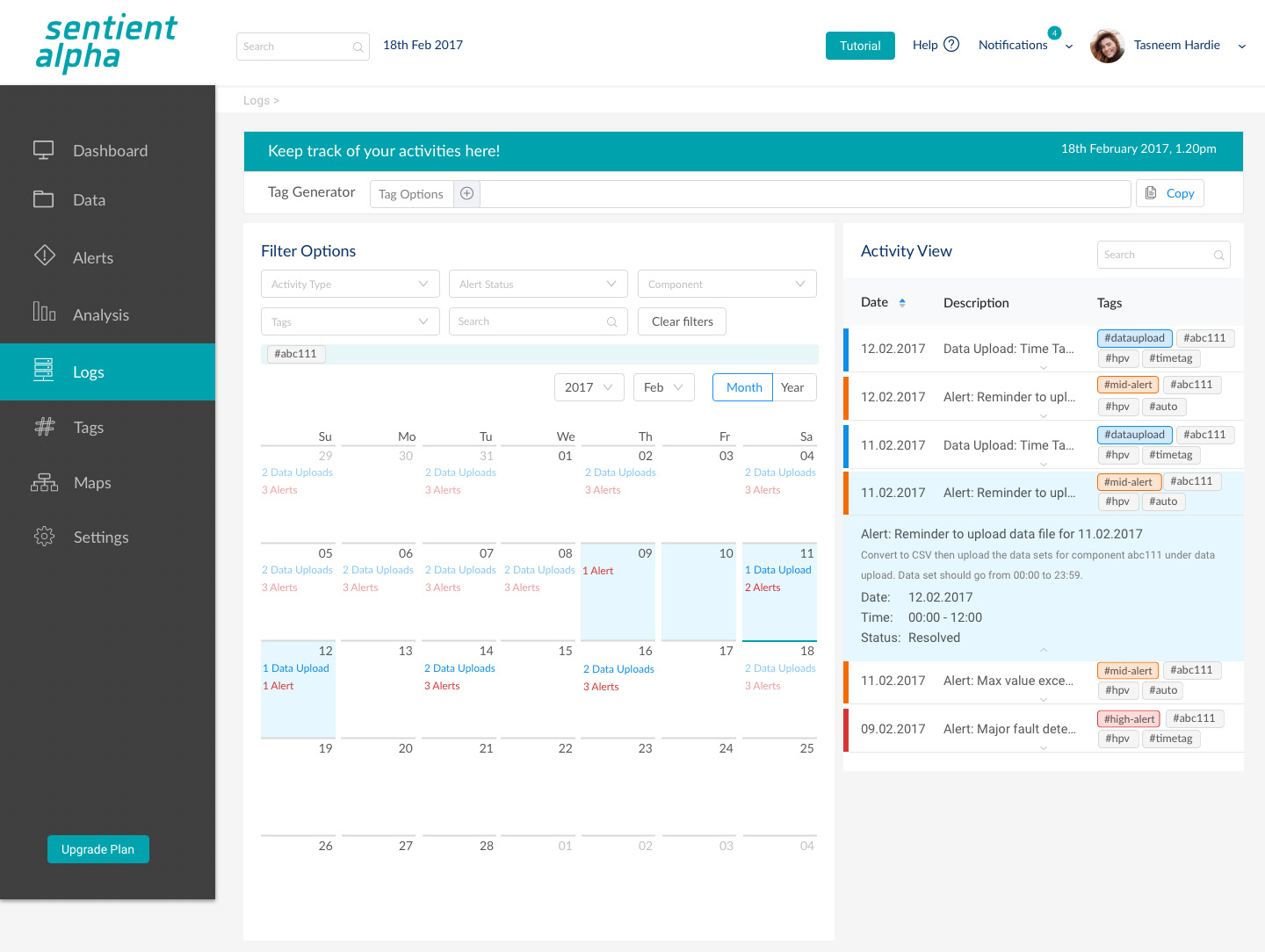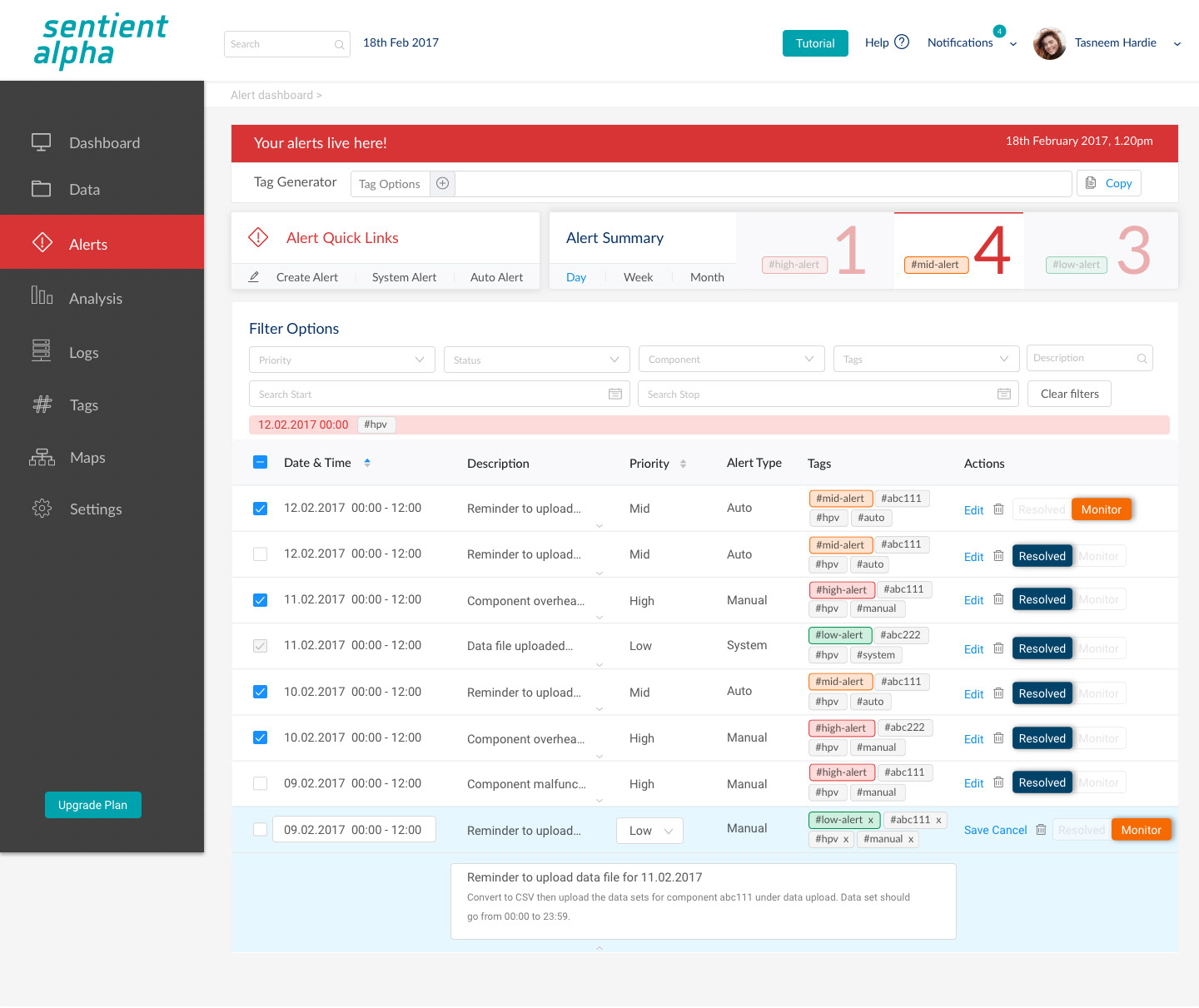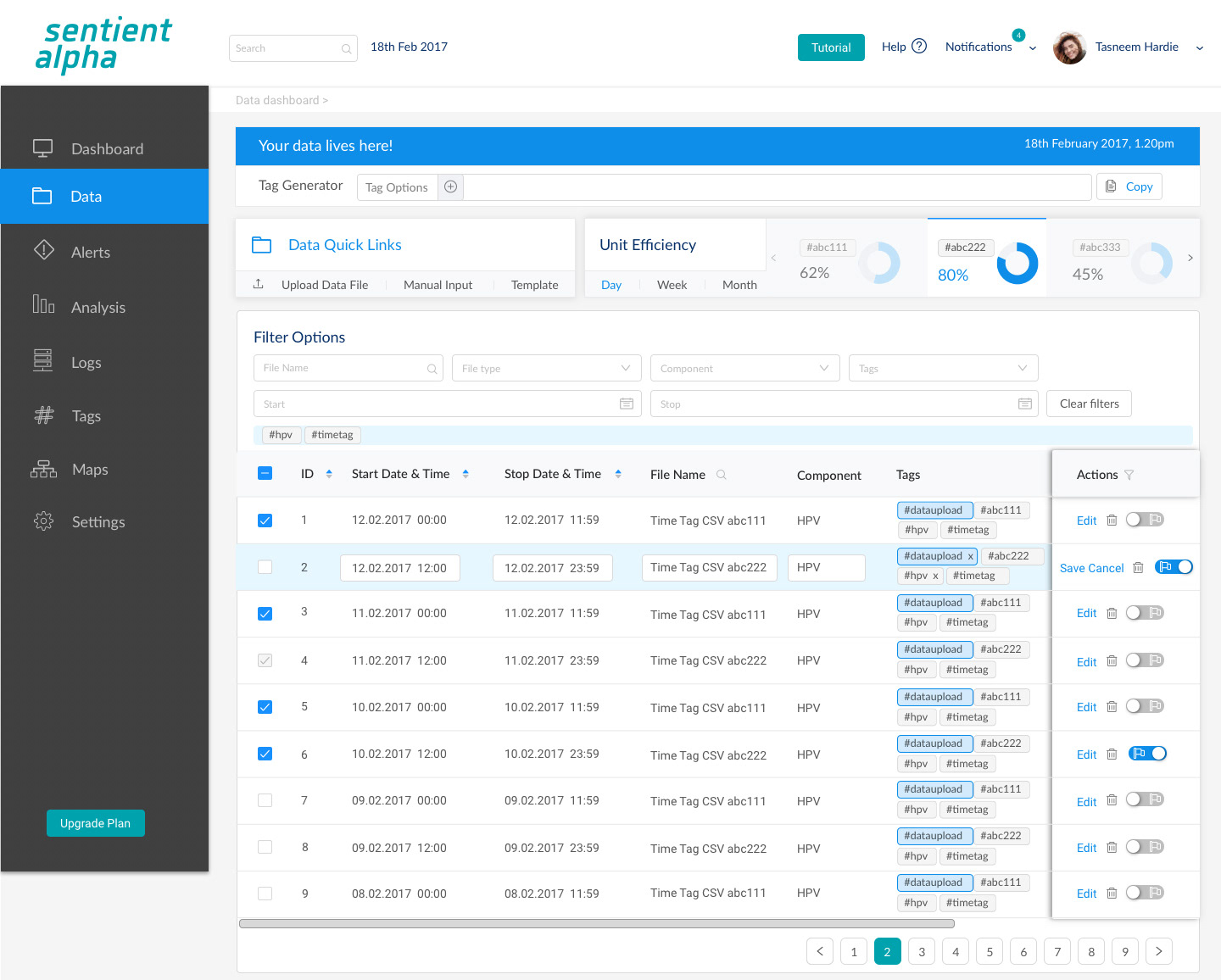Background
Synengco's main product, SentientSystem, is an analysis platform that uses a comprehensive model of an asset system to automatically conduct real-time analysis for making short, medium, and long-term decisions. However, the company faces challenges from a business perspective, as educating potential clients about the system is time-consuming and expensive, and training clients or third-party integrators is difficult.
Maintenance and services are also challenging to scale as only in-house experts can effectively work with the software. These issues hinder clients from maximizing the value of SentientSystem, as they lack an understanding of its capabilities and miss out on opportunities it can uncover. Furthermore, the complex configuration system and high cost of software configuration and maintenance pose additional problems for clients.
Project Goal
The project faced two primary challenges: Firstly, the existing interface lacked user-friendliness, making it difficult for users to interpret analysis results effectively. Secondly, the configuration process was overly complex, demanding expertise in programming, the domain, and SentientSystem itself. The objective was to develop a web application that addressed these issues by offering a user-friendly interface and simplified configuration, resulting in customized analysis output tailored to each user's needs. By achieving this, the product aimed to provide its own value proposition, complementing the expert analysis services provided by Synengco's professionals.
Discovery
Stakeholder Interviews
To gain a comprehensive understanding of SentientSystem and its users, stakeholder interviews were conducted. The interviews aimed to grasp the roles of stakeholders in relation to SentientSystem, understand its capabilities and configurations and envision a baseline configuration for the system. The insights gathered from the interviews proved invaluable in scoping and designing the product goals, identifying areas for improvement within the current system, and tailoring functionality and user flows to meet the needs of target users.
Additionally, the interviews revealed the top reasons why clients choose SentientSystem over competitors, such as its ability to increase workflow efficiency and optimize system performance. However, common complaints and questions from clients included the system's complexity, limited understanding of its full capabilities, time constraints for learning a new system, and a preference for a solution that integrates with their existing systems. In addition to stakeholder interviews, supplementary contextual inquiries were also conducted to gather further information.
Proto-Personas
To guide the system development process of SentientAlpha, four proto-personas were established based on the insights gathered from interviews. These proto-personas served as reference points throughout the project. Due to the challenges of acquiring actual users from the fast-paced building energy systems industry, the decision was made to create these proto-personas using professional discussions and knowledge obtained from stakeholder interviews. The proto-personas represented individuals with varying degrees of involvement with the asset, highlighting the importance of ensuring that the system accommodated all personas and was easily understandable by them. The level of engagement each persona would have with different modules of the system was also considered.
Explore
Competitor Research
Before establishing design principles, comprehensive competitive research was conducted to examine existing tools and their designs. The purpose was to assess the market potential and identify ways for SentientAlpha to differentiate itself. The research focused on evaluating usability, and visibility while comparing competitor offerings with the envisioned product.
To facilitate analysis and discussion within the Synengco team, the competitor tools were categorized into groups based on similarities in font usage, colour schemes, clarity, and layout flexibility. This research aimed to inform the design direction and ensure that SentientAlpha stood out in the market.
During our exploration, we uncovered that the user interface (UI) of the system should prioritize adaptability and modularity while maintaining a clean design and employing a smart colour scheme. These UI characteristics are essential for achieving our objectives and ensuring alignment with industry standards in terms of user experience (UX).
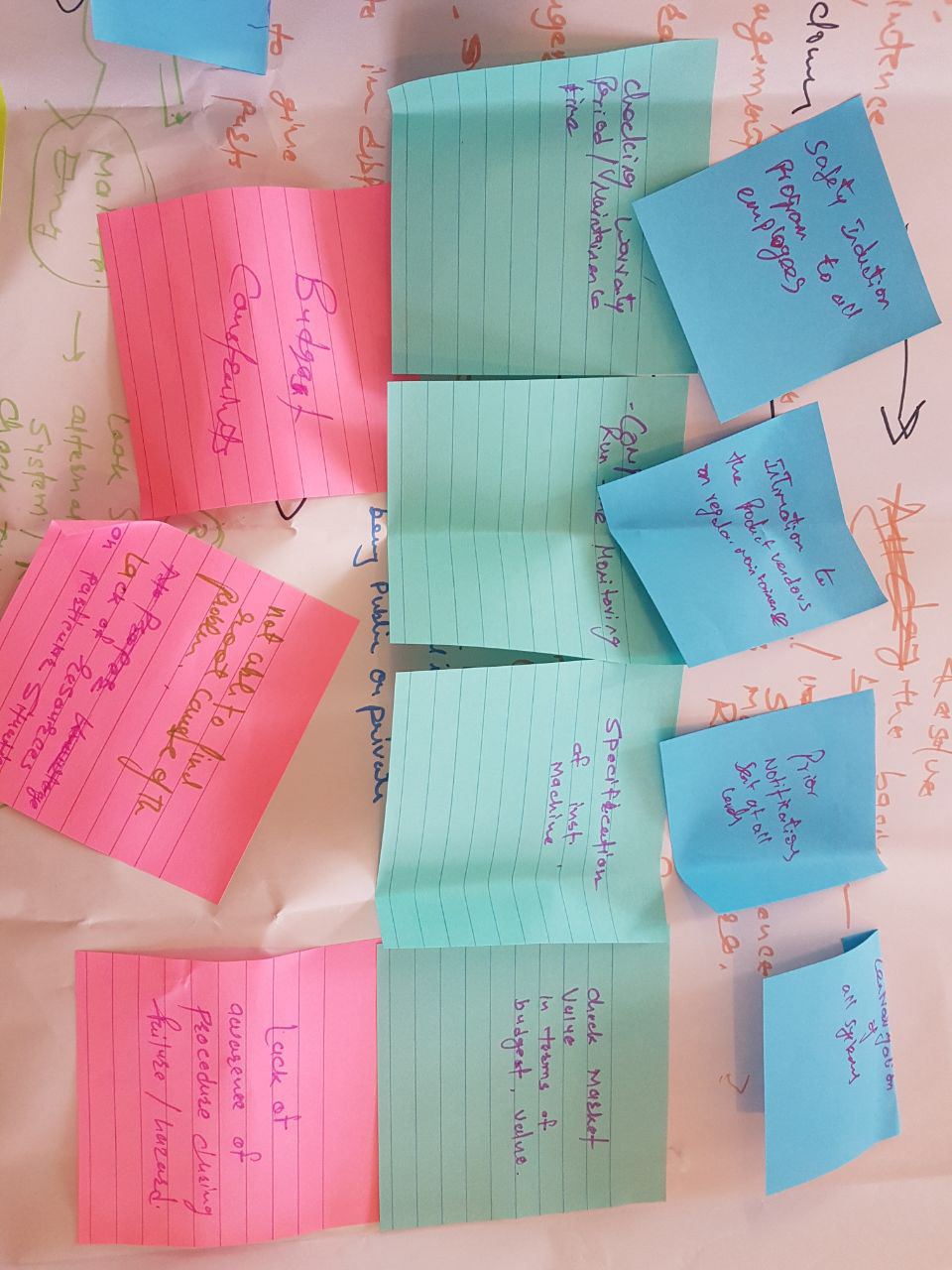
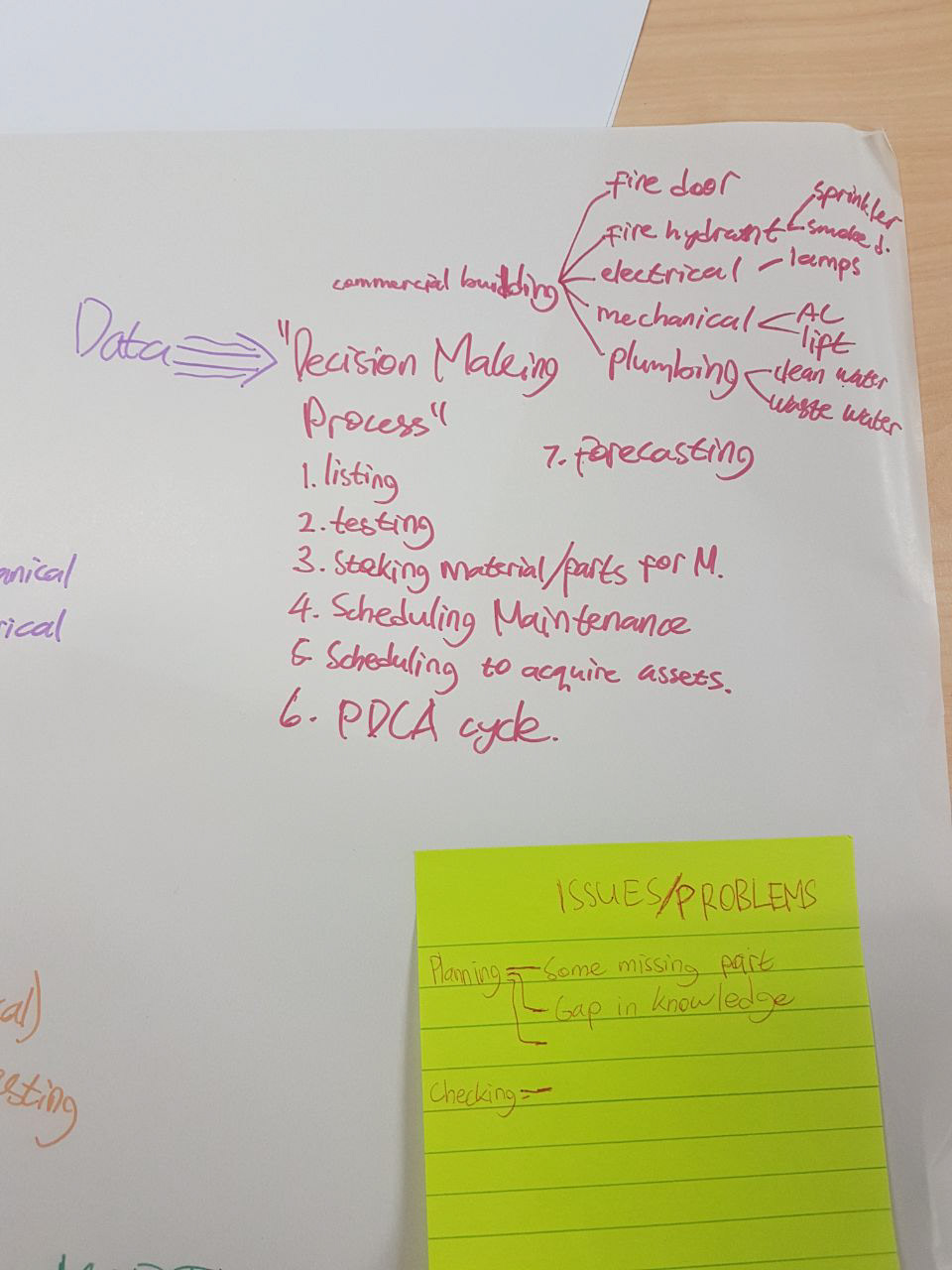

IDEATE
Participatory Design Workshops
I conducted workshops for Building Management students at Queensland University of Technology to engage real-world users, foster an Innovation Incubator focused on data management, and challenge our assumptions. Through these workshops, I gained valuable insights into the decision-making process of professionals in the field and how our system could digitally replicate or alleviate their processes. One notable feature that emerged was the ability to search for similar issues from past cases to assess asset history and conduct root cause analysis. The students expressed a strong preference for a system that addressed issues with efficiency, good communication, and expertise. These insights informed the development of the logs and tag section of the app.
User Journeys + Testing
I created three versions of the user journey for the same set of tasks and conducted prototype testing using InVision. The goal was to identify the most effective version. Professionals from the industry participated in the testing process, evaluating both interactive and paper prototypes. The key tasks focused on uploading and creating data files, configuring alerts and their variables, and exploring dashboard interactivity. The insights gathered from this testing played a crucial role in shaping the current prototype's main user experience.
